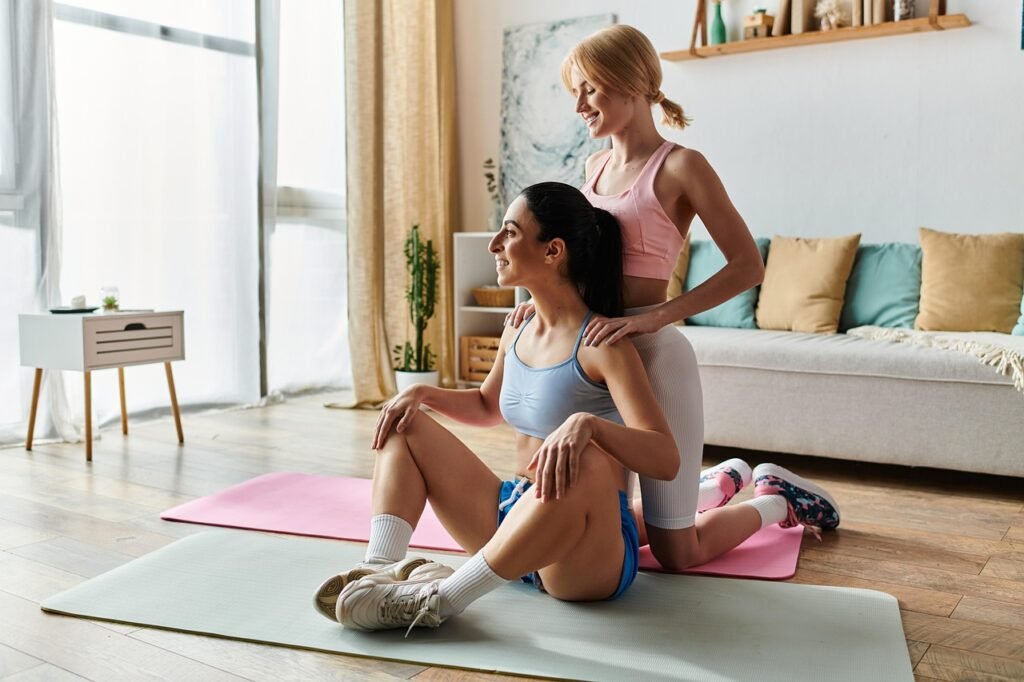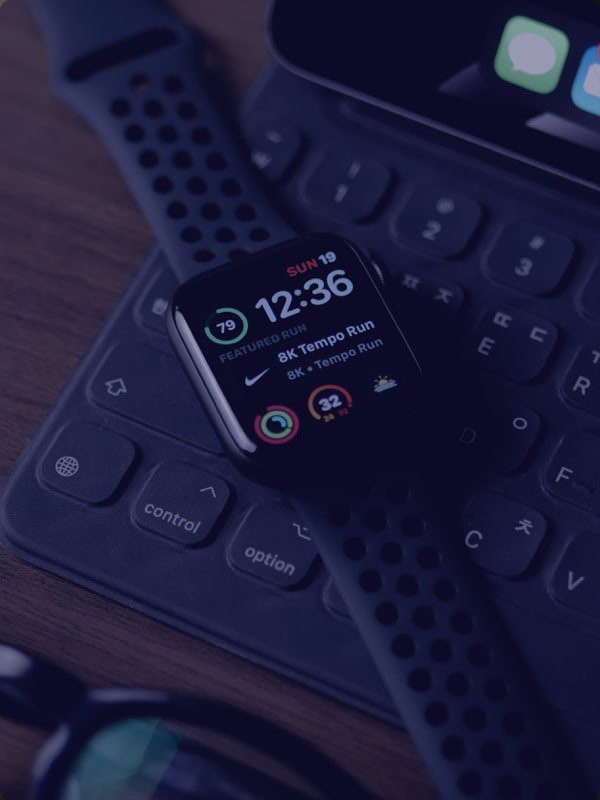How to Create a Balanced Home Workout Schedule for Women in Their 30s

Introduction
Welcome to your 30s! This decade is a time of empowerment, growth, and hitting your stride. It can also be a time when you notice your body and its needs are changing. If you’re looking to build a fitness routine that supports your health, boosts your energy, and gives you that incredible post-workout glow, you’ve come to the right place. Crafting a balanced home workout schedule isn’t about punishment; it’s about creating a sustainable self-care practice that you genuinely enjoy. Let’s build a plan that works for you.
Why a Balanced Workout Matters in Your 30s
In our 30s, our bodies are brilliant, but they do start to change. Metabolism naturally begins to slow down, and we can lose muscle mass more easily than in our 20s. This is why a balanced approach to fitness is so important.
Think of it like building a house. You wouldn’t just build the walls without a foundation, right? A balanced fitness schedule for women acts as that strong foundation for your long-term health. It helps maintain a healthy metabolism, protects your bones, keeps your heart strong, and manages stress. It’s not just about how you look, but about feeling vibrant, energized, and resilient from the inside out.
The Pillars of a Balanced Fitness Routine
A truly effective workout plan is built on four key pillars. Giving each one attention ensures you’re nurturing your body in a holistic way, preventing burnout and injury while maximizing results.
1. Cardiovascular Exercise
Cardio is any activity that gets your heart rate up and makes you breathe a little harder. It’s fantastic for your heart, lungs, and circulation. Plus, it’s a major mood-booster, releasing those feel-good endorphins that melt stress away. The great thing about cardio is that you don’t need a gym. You can have a dance party in your living room, try a HIIT (High-Intensity Interval Training) video on YouTube, or even just do some classic jumping jacks. The key is finding something you love. It’s also wise to understand the difference between Low vs. high impact workouts to choose what’s best for your joints and goals.
2. Strength Training
If cardio is the engine, strength training is the chassis. It’s what gives your body structure and power. Building and maintaining muscle is crucial in your 30s because muscle burns more calories at rest than fat, giving your metabolism a helping hand. It also strengthens your bones, which is vital for preventing osteoporosis later in life. You don’t need to become a bodybuilder! Simple bodyweight exercises like squats, lunges, push-ups (on your knees is a great start!), and planks are incredibly effective. A pair of dumbbells or resistance bands can add variety, but your own body is a powerful tool.
3. Flexibility and Mobility
Flexibility (your muscles’ ability to stretch) and mobility (your joints’ ability to move through their full range of motion) are your secret weapons against injury. They keep you feeling limber, reduce aches and pains, and improve your posture. Think of it as oiling your body’s hinges. Dedicating just 10–15 minutes a few times a week to stretching, yoga, or Pilates can make a world of difference. It’s the perfect, calming way to end a workout or start your day.
4. Mindful Movement and Recovery
Rest isn’t lazy; it’s productive. Your muscles repair and grow stronger during downtime. Mindful movement and recovery are just as important as the workouts themselves. This pillar includes getting enough sleep (7–9 hours is the gold standard), taking rest days, and incorporating active recovery like a gentle walk or a long stretch session. It also includes mindfulness practices like meditation or deep breathing, which help lower stress hormones that can hinder your progress and impact your overall well-being.
How to Create Your Weekly Home Workout Schedule
Ready to put it all together? This five-step process makes creating your perfect home workout schedule simple and stress-free.
Step 1: Assess Your Current Fitness Level Be honest with yourself. Are you a complete beginner, or have you been working out for a while? Your starting point determines your path. There’s no shame in starting slow; in fact, it’s the smartest way to begin.
Step 2: Define Your Wellness Goals What do you want to achieve? Maybe it’s a workout routine for weight loss at home, or perhaps you want to feel more energetic, sleep better, or simply dedicate more time to yourself. Your “why” is your most powerful motivator.
Step 3: Schedule Your Workouts Look at your week and find realistic slots for exercise. Treat these sessions like important appointments you wouldn’t cancel. Even 20–30 minutes is enough to make a difference. Consistency is more important than intensity, especially at the start.
Step 4: Plan Your Exercises for Each Day This is where you mix and match the four pillars. Aim for 2-3 cardio sessions and 2-3 strength sessions per week. You can sprinkle in flexibility and mobility work after each workout or on your rest days. For inspiration, check out this great resource on effective low-impact exercises.
Step 5: Listen to Your Body and Adjust Some days you’ll feel full of energy; other days, you won’t. That’s normal. A good workout plan is a guide, not a rigid rulebook. If you’re feeling sore or tired, consider a lighter activity or a rest day. Listening to your body is the key to long-term success.
Sample Home Workout Schedule
Here are a few sample schedule to get you started. Feel free to adapt them to fit your life and goals. These are great templates for a workout plan for busy women.
For the Busy Professional (3-Day Split)
- Monday: Full Body Strength (30 mins – squats, push-ups, rows, planks)
- Wednesday: HIIT Cardio (20 mins – jumping jacks, high knees, burpees) & Flexibility (10 mins)
- Friday: Full Body Strength (30 mins – lunges, overhead press, glute bridges)
For the Fitness Enthusiast (5-Day Split)
- Monday: Upper Body Strength (45 mins)
- Tuesday: Cardio (30-45 mins – running, cycling, or dance cardio)
- Wednesday: Lower Body Strength (45 mins)
- Thursday: Active Recovery (30 mins – yoga or a brisk walk)
- Friday: Full Body HIIT & Core (45 mins)
For Beginners (Full-Body Focus)
This beginner home workout schedule plan for females focuses on building a solid foundation with consistency. For more ideas, explore these Gentle workouts that are perfect for getting started.
- Sunday: Full Body Strength (20-30 mins)
- Monday: Rest or Light Walk
- Tuesday: Cardio (20 mins – brisk walking, light jogging, or a beginner dance video)
- Wednesday: Rest
- Thursday: Full Body Strength (20-30 mins)
- Friday/Saturday: Rest or Flexibility/Mobility (15 mins)
Beyond the Home Workout Schedule: Linking Fitness to Skin and Beauty
One of the most exciting benefits of a consistent workout routine is the impact it has on your skin. It’s a natural beauty booster that works from the inside out, perfectly aligning with a holistic approach to self-care.
When you exercise, you increase blood flow and circulation throughout your body. Think of this as a delivery service for your skin cells. This enhanced circulation brings more oxygen and vital nutrients to the skin’s surface, which helps repair damage and promote collagen production. The result? That healthy, radiant “post-workout glow” that no highlighter can truly replicate.
Sweating gets a bad rap, but it’s actually your body’s natural way of detoxing. When you sweat, your pores open up and release the buildup of dirt, oil, and impurities that can lead to breakouts. It’s like a mini-facial with every workout. The key is to cleanse your skin afterward to wash away that purged grime and prevent it from clogging your pores again.
Furthermore, exercise is one of the most effective stress-management tools available. Physical activity helps lower levels of the stress hormone cortisol. High cortisol levels are linked to a host of skin issues, from acne breakouts to flare-ups of conditions like eczema and psoriasis. By keeping stress in check, you’re also helping to keep your complexion calm and clear. A balanced fitness routine isn’t just for your body; it’s a foundational part of any effective skincare regimen.
Tips for Staying Consistent and Motivated
Starting is one thing; staying consistent is another. Here are a few tips to keep your motivation high.
- Find Activities You Genuinely Enjoy: If you hate running, don’t run! Your workout shouldn’t feel like a punishment. Explore different things—dancing, kickboxing, yoga, hiking—until you find something that makes you feel happy and powerful.
- Create a Dedicated Workout Space: You don’t need a full home gym. A small corner of your living room with a yoga mat and a few weights can become your personal fitness sanctuary. Having a dedicated space makes it easier to get into the right mindset.
- Track Your Progress: Don’t just focus on the scale. Celebrate the non-scale victories! Are you feeling more energetic? Are your clothes fitting better? Can you do more push-ups than when you started? These are the wins that truly matter.
- Incorporate Self-Care Rewards: Link your fitness habit to another self-care practice you love. For example, after you finish your last workout of the week, treat yourself to a relaxing bath, a face mask, or an hour with a good book.
Frequently Asked Questions
1. How many days a week should I work out? Aim for 3-5 days a week. This gives your body enough time to rest and recover, which is when the real magic happens.
2. What’s the best type of cardio to do at home? The best type is the one you’ll actually do! HIIT, dance cardio, jumping rope, and step aerobics are all fantastic options that require minimal space and equipment.
3. Do I need equipment for home workouts? Not at all! Your body weight is an incredibly effective tool for building strength. If you want to add variety, a set of resistance bands or a pair of dumbbells is a great, affordable investment.
4. How long should my workouts be? Consistency is more important than duration. A focused 20-30 minute session can be just as effective as a longer, distracted one.
5. How do I avoid injury when working out alone? Always warm up before you start and cool down afterward. Focus on proper form—watch videos to learn the correct technique—and never push through sharp pain.
6. Can exercise really improve my skin? Absolutely! Increased blood flow delivers nutrients to your skin cells, and sweating helps clear out your pores, leading to a healthier, more radiant complexion.
7. How soon can I expect to see results? You’ll likely feel results—like more energy and a better mood—within the first week or two. Physical changes, like in a workout routine for weight loss at home, typically become more noticeable after 4-6 weeks of consistent effort.


